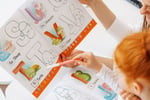
In preschool and Prep, young children will typically tackle the equation 4+5 by counting out a pile of four counters and another pile of five counters and then adding them all together. In the absence of counters they will use their fingers. In Year 1, they will learn about 10s and units and use base 10 blocks to explore basic mathematical concepts such as addition, subtraction and place value. They will use number lines to help them count on from a given number, and number squares to learn tricks like adding 10 by moving down a line.

Base 10 blocks, number line and number square
At some point, however, children will need to make the leap from using visuals/props to using mental arithmetic for basic addition. Here are three maths strategies you can help your child with:
Counting on
Counting on from a given number is generally the first stage in mental arithmetic. When children first learn their numbers, they have to start everything from the number one. If they need to know what comes after 8 they will have to count up from 1 to find out. It is relatively easy for them to add together 3 and 4 because they can hold up three fingers on one hand, four on the other and then count up all the fingers. But once they are tackling, say 6 + 7, they run out of fingers and get stuck.
Using the 'counting on' strategy (instead of 'counting all'), a child will identify the biggest number in a sum as their starting point (5, in the example below) and then 'count on' the other number from there (often using their fingers!).
4 + 5
This is why number lines are so useful in school:

How you can help
- Play 'What comes next?'
"Six, seven, eight ... what comes next?"
"Ten, eleven, twelve ... what comes next?"
Play this 'game' with your child every now and then to help cement their number sequencing. - Which is bigger?
Help your child identify whether a number is bigger or smaller than another number in day-to-day activities. For example:
"We need 50 grams of butter... the scales say we have 48 grams. Do we have enough? Which number is bigger, 50 or 48?"
"That house is number 92 and the house opposite is 89. Which is the biggest number?" - Play board games like Snakes and Ladders
Any game with numbered spaces, like Snakes and Ladders, will help your child recognise 'which number comes next'. After each roll of the dice, they will need to 'count on' to move their counter. - Play board games with two dice
e.g. Monopoly (or speedy Snakes and Ladders with two dice instead of one). This will give your child plenty of opportunity to practise their counting on, as they add the two numbers together. - Play with rulers/tape measures
Seeing numbers ordered consecutively in a line may help your child remember number order and what comes next. An extendable tape measures makes a fun visual tool for practising counting on. Better still, get your child to do the measuring up in real life situations - the length of a room for a new carpet, the width of a greetings card and envelope (is the envelope wide enough for the card to fit in?), your child's height marked on the side of a door etc.
"Find me the number 22. Count on three. What number do you get?"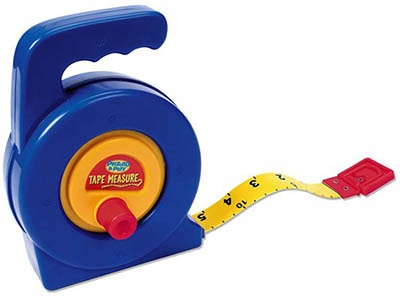
Doubles and near-doubles
5 fingers on the left hand + 5 fingers on the right hand = 10 fingers altogether
2 front legs + 2 back legs = 4 legs on a cow
6 eggs + 6 eggs = 12 eggs
Children are surrounded by doubles in their everyday life so learning 1 + 1 and 2 + 2 etc comes quite easily. Once they know their doubles, they no longer have to think about the equation to solve it; they will automatically know that 7 + 7 = 14 without having to count.
When a child knows their doubles well, it is not a big leap to solve sums that are close to doubles, e.g. 4 + 5 is one more than 4 + 4.
How you can help
- Point out doubles to your child in day-to-day life and see if they can find the answer (e.g. seven days in a week - how many days in a fortnight? Four fingers in a KitKat - how many in two KitKats?)
- Play with Lego: Hunting for the right shape and size pieces can help children learn simple doubles quickly - an 'eight-er' piece, for example, has two rows of four studs. Use numbers as you construct with your child, e.g. "I need a flat yellow piece with two rows of six dots. Twelve dots in total", "Pass me a grey four-er".
- Sing songs about doubles with your child, such as Inchworm, or make up your own. The dafter the better - it makes them more memorable!
- Read books about doubles, e.g.:
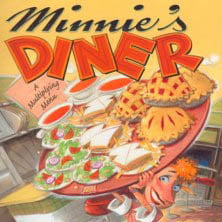
"Minnie's Diner" by Dale Ann Dodds
The five McFay brothers place their orders at Minnie's Diner. The second brother orders twice as much as the first brother. The third brother orders double again ... and so on until Papa McFay arrives and orders 32 of everything!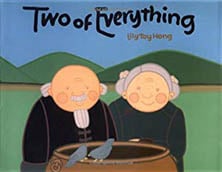
"Two of Everything" by Lili Toy Hong
A Chinese folktale about a little old woman and a little old man who find a magic pot that doubles anything you put inside - including the little old man and woman!
Make 10
Memorising the number combinations that add to 10 gives children more automaticity in their mental arithmetic. Once they recognise that 7+3, 6+4, 5+5, 8+2 and 9+1 equal 10, they will spend less time counting on their fingers; they will 'know' these combinations without having to work them out. When a child knows that 8+2 equals 10, it is easy to work out 8+3 or 8+4. Knowing the number bonds that make 10 also removes the need to 'count on' in some situations.
How you can help
- Finger fun
Let your child use their fingers, since they have 10 of them! When you're on car journeys or waiting in line, give them a number (e.g. 3) and ask them what they need to add to it to make 10. With their hands held in front of them, they can put down three fingers to see they need seven to make 10.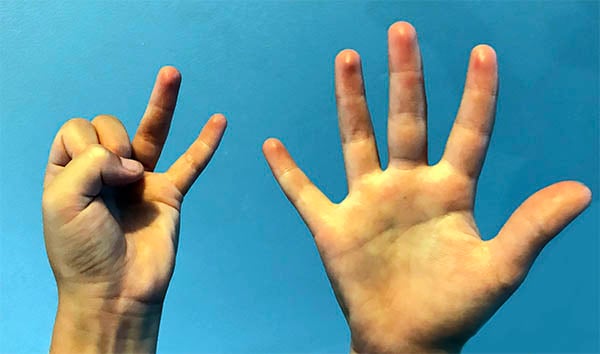
- Show them a rainbow
Follow the rainbow colours to find number combinations that make 10.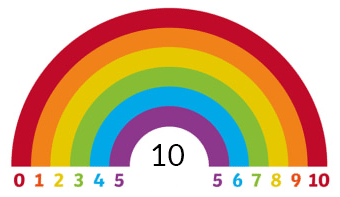
- Card games
There are many card games you can play with your child to help them remember number bonds of 10. Here are a couple to get you started:
- Memory Game
Remove the Kings, Queens, Jacks, 10s and Jokers from a pack of playing cards. Aces will count as 1s. Place the remaining cards face down on the table in a grid.
Each player turns over two cards. If they add up to 10, they get to keep the cards and have another go. If the two cards turned over do not sum to 10, they are returned face down on the table and the next player takes their turn. The player with the most cards at the end wins.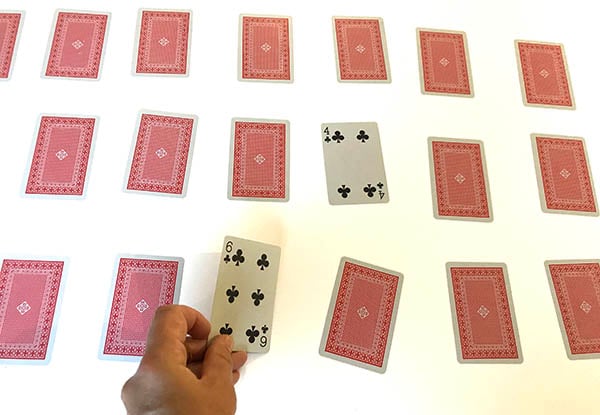
- Make 10 Pyramid (a twist on Solitaire)
Remove the Kings, Queens, Jacks and Jokers from a pack of playing cards. Aces will count as 1s. Shuffle and deal the first 21 cards into a pyramid, as shown below.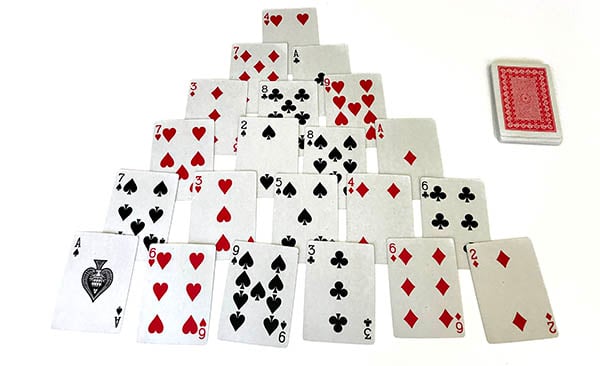
The aim of the game is to remove card pairs that add up to 10. (10s can just be removed in play on their own as they already equal 10). BUT, cards may not be removed while there is another card overlapping it. So, at the beginning, only cards on the bottom row can be removed (in this case below, the ace and the nine). Once a card has been removed, the card that it had overlapped can come into play. If there is no combo available to be removed, pick up a card from the remaining pile of cards and place on the pyramid. Continue until all the cards in the pyramid have been removed.
- Memory Game
Repetition and real-life-situations are key when helping your young child with maths. Get them to add up their pocket money savings, follow recipes in the kitchen, work out how many settings you'll need at the table when guests come over. Look out for those everyday opportunities to put their elementary addition skills into practice.





